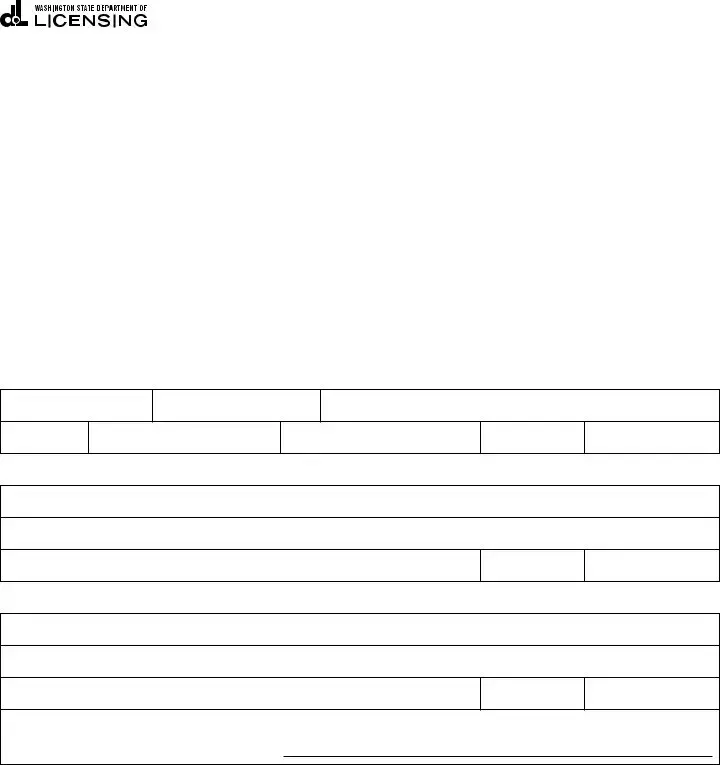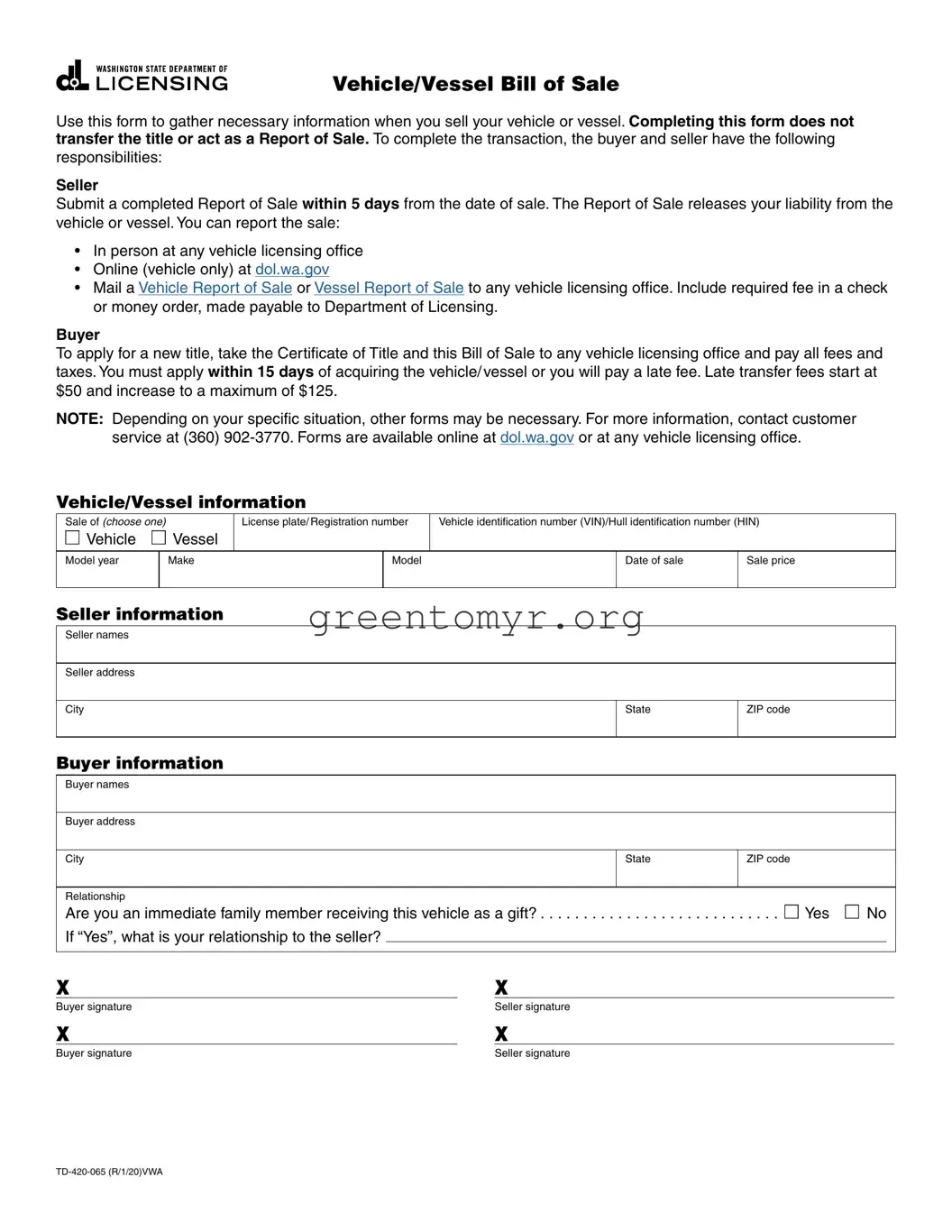
Vehicle/⁜Vessel Bill of Sale
Use this form to gather necessary information when you sell your vehicle or vessel. Completing this form does not transfer the title or act as a Report of Sale. To complete the transaction, the buyer and seller have the following
responsibilities:
Seller
Submit a completed Report of Sale within 5 days from the date of sale. The Report of Sale releases your liability from the vehicle or vessel. You can report the sale:
•In person at any vehicle licensing office
•Online (vehicle only) at dol.wa.gov
•Mail a Vehicle Report of Sale or Vessel Report of Sale to any vehicle licensing office. Include required fee in a check or money order, made payable to Department of Licensing.
Buyer
To apply for a new title, take the Certificate of Title and this Bill of Sale to any vehicle licensing office and pay all fees and taxes. You must apply within 15 days of acquiring the vehicle/ vessel or you will pay a late fee. Late transfer fees start at $50 and increase to a maximum of $125.
NOTE: Depending on your specific situation, other forms may be necessary. For more information, contact customer
service at (360) 902-3770. Forms are available online at dol.wa.gov or at any vehicle licensing office.
Vehicle/Vessel information
Sale of (choose one)
 Vehicle
Vehicle  Vessel
Vessel
License plate/ Registration number
Vehicle identification number (VIN)/Hull identification number (HIN)
Seller information
Seller names
Seller address
City
Buyer information
Buyer names
Buyer address
City
Relationship
Are you an immediate family member receiving this vehicle as a gift?. . . . . . . . . . . . . . .  Yes
Yes  No If “Yes”, what is your relationship to the seller?
No If “Yes”, what is your relationship to the seller?
X |
|
X |
Buyer signature |
|
Seller signature |
X |
|
X |
Buyer signature |
|
Seller signature |
TD-420-065 (R/1/20)VWA


 Vehicle
Vehicle  Vessel
Vessel Yes
Yes  No If “Yes”, what is your relationship to the seller?
No If “Yes”, what is your relationship to the seller?